jukka o. miettinen
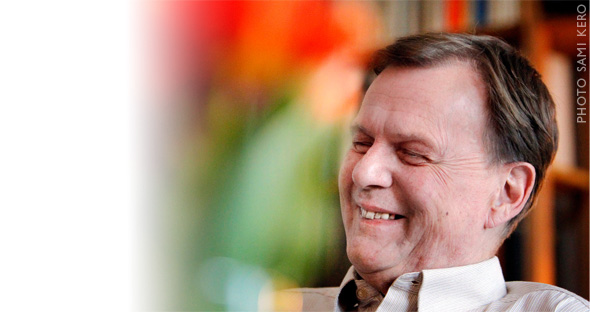
Jukka O. Miettinen is a Finnish writer, cultural critic and long-term artistic director of two festivals. He holds a Doctorate in the Art of Dance and is a Visiting Fellow at the Finnish Theatre Academy. He has worked as a UNESCO Junior Expert for Asian Culture and is one of the founders and Artistic Director of the annual Asia in Helsinki Festival. He is a lecturer at the Theatre Academy Helsinki and the University of Helsinki and Mahidol University in Bangkok, Thailand. He has published several books and organised several exhibitions on Asian cultures.
main publications
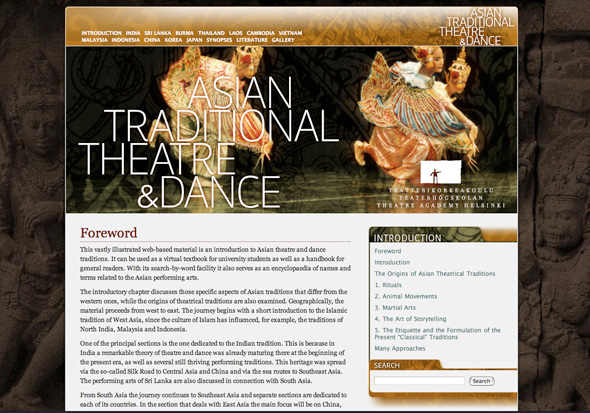
Asian Traditional Theatre and Dance, an online book, published in 2010 by Theatre Academy Helsinki. It can be used as a virtual textbook for university students as well as a handbook for general readers. With its search-by-word facility it also serves as an encyclopaedia of names and terms related to the Asian performing arts. Twelve countries are included in the present, first edition of this on-line material: India, Sri Lanka, Myanmar, Thailand, Laos, Cambodia, Vietnam, Malaysia, Indonesia, China, Korea, and Japan. Each chapter starts with a country profile and provides a map and essential information on population, ethnicities, languages, and religions. The core chapters, dedicated to specific theatre and dance styles or traditions, describe what is known about their early developments as well as their present state. Altogether 125 theatrical genres are introduced, each in its own chapter. Pop-up texts and related articles give further information about specific features, such as drama texts, history etc. Dozens of video clips and some 1200 photographs have been provided in order to visualise these colourful traditions with their intricate acting techniques and masks or make-up practices.

Dance Images in Temples of Mainland Southeast Asia is a doctoral dissertation, published by the Theatre Academy Helsinki in 2008. The reliefs and murals of temples in mainland Southeast Asia, such as the famous Angkor Wat complex in Cambodia, the temples of the city of Pagan in Myanmar, and the royal temple, Wat Phra Keo, in Bangkok, include thousands of figures related to dance in their iconographical programmes. Many of them give valuable information about dance from periods of which very little, if any, textual evidence exists to throw light on this subject. This study analyses these dance images by applying and expanding the dance iconographical method formulated in the 1990s. The undeniable Indian influence on the traditions of dance and image-making in Southeast Asia is discussed, while the focus is on the localisation process of the Indian-influenced prototypes in Southeast Asia.
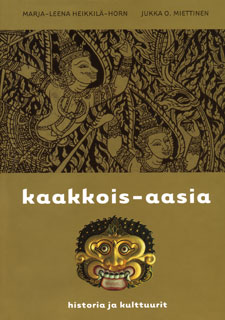
Kaakkois-Aasia, historia ja kulttuurit (Southeast Asia, History and Cultures, in Finnish), co-authored with Marja-Leena Heikkilä-Horn, Otava, 2000. An illustrated introduction to Southeast Asian history and cultures from prehistoric times to the present day.
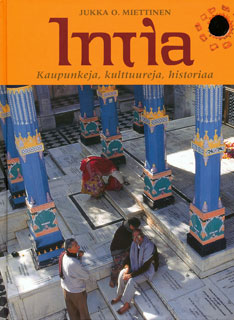
Intia: kaupunkeja, kulttuureita, historiaa (India: Cities, Cultures and History, in Finnish) is a vastly illustrated guide to Indian culture and historical sites. It includes essays on various aspects of Indian cultures and fifty cities and historically interesting sites. Otava, first edition 1991, second edition 1999.
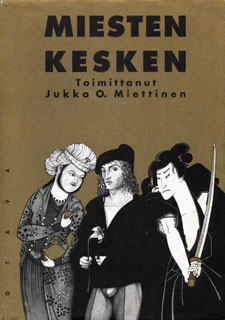
Miesten kesken (Among Men, in Finnish) is an illustrated anthology of gay literature covering Europe, North America, South America and Asia. Its introduction explains the attitudes towards homosexuality in these cultures. The anthology includes thirty examples (either short stories or fragments of novels), translated from original languages. Otava, 1993.
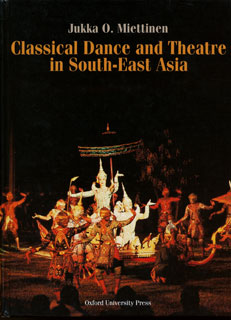
Classical Dance and Theatre in South-East Asia (Oxford University Press, 1992) is a vastly illustrated guide to the rich theatre and dance traditions of South-East Asia. It includes separate chapters dedicated to the early developments of these art forms in the region as well as to later Burmese, Thai, Indonesian, Cambodian, Malaysian, and Vietnamese traditions.

Jumalia, sankareita, demoneja (Gods, Heroes and Demons, in Finnish) is a vastly illustrated introduction to the Asian theatre forms and their history. Teatterikorkeakoulu & Valtion painatuskeskus, 1987.

Silmät auki Aasiassa (Keep your eyes open in Asia) is a collection of travel essays, which were first published as articles in Helsingin Sanomat, the largest newspaper in Finland. Gaudeamus, 1987.
festival work

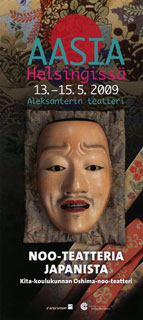
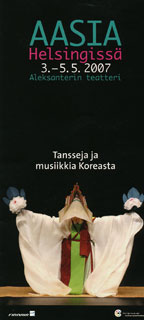

Asia in Helsinki Festival Jukka O. Miettinen, together with Veli Rosenberg, founded the Asia in Helsinki Festival in 1997. It has introduced Asian performing arts to Finnish audiences. Miettinen is the Festival’s artistic director. The venue is the historical Alexander Theatre in the centre of Helsinki. www.kulttuuri.hel.fi/aasia
2010 |
A reconstruction of the Chinese play Fragrant Lady in the 16th-century kun opera style |
2009 |
Noh theatre from Japan |
2007 |
Buddhist dance rituals, classical and contemporary dances from Korea |
2006 |
Dances from the regions of the Indian Ocean (Aceh, South Thailand, Sri Lanka, South India) in order to commemorate the tsunami catastrophe |
2005 |
Peking opera from China |
2004 |
Traditional puppetry from Thailand and Burma (Myanmar) |
2003 |
Court dances and wayang wong dance-drama from Yogyakarta, Indonesia |
2002 |
Khon dance-drama performed by the Royal Ballet of Thailand |
2001 |
Performing arts of South India: classical music by K.S.Subramanyan and Bombay Jeyashri, bharatanatyam by Alarmel Valli, and contemporary dance by the Daksha Seth Dance Company |
2000 |
A reconstruction of the Chinese drama classic Snow in Midsummer in the 16th-century kun opera style |
1999 |
Kathakali dance-drama and mohiniattam dances from South India as well as Manipur dances from East India |
1998 |
Yue opera from China |
1997 |
Kun opera from China and contemporary butoh dance from Japan |
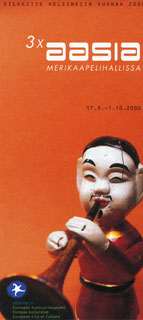
Helsinki 2000 3 X Asia was one of the sub-festivals of the celebrations in 2000 when Helsinki was one of the European Capitals of Culture. The festival, planned and produced by Miettinen and Veli Rosenberg, included Vietnamese water puppetry, an Indian dance and music group from Rajasthan, and a traditional Chinese acrobatic circus troupe.
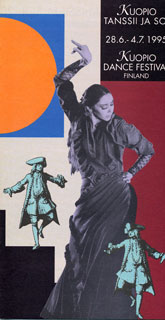
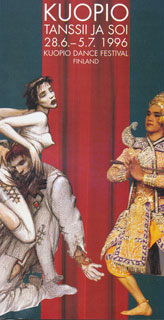
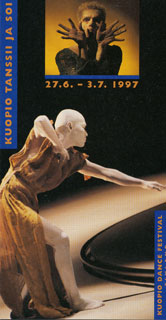

Kuopio Dance Festival The Kuopio Dance Festival is the oldest and largest dance festival in Finland. It takes place annually in the city of Kuopio, in eastern Finland. Miettinen was its artistic director in 1992–1998. He introduced dance traditions as well as contemporary dance from various parts of Europe, Asia, and South and Central America.
main exhibitions
Jukka O. Miettinen has, together with other specialists, organised several exhibitions on Asian cultures in various museums in Finland.
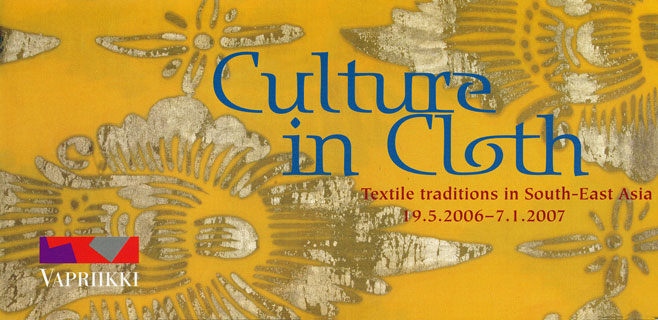
Culture in Cloth, Textile traditions in Southeast Asia was held at the Vapriikki Museum in the city of Tampere in 2006–2007.

Artist’s Asia was an exhibition at the Museum of Cultures in Helsinki in 2002–2003 to commemorate the lifework of Tero Kiiskinen, a stage designer, traveller and collector of Asian art.
Gods at Play, Indian Dance and Theatre was compiled by Miettinen and organised by the Finnish Theatre Museum in 2001. It was exhibited at several museums around Finland in 2002–2003.
Dragon Robe and Phoenix Crown was researched and compiled from collections in China and Finland by Miettinen and Veli Rosenberg. It presented the history of Chinese theatrical arts. It was organised by the Finnish Theatre Museum and exhibited at several museums around Finland in 1997–1999.

Indonesia, Island Cultures was organised by the Finnish Board of Antiquities at the Finnish National Museum. In 1993–1996 it was shown at many museums around Finland.
Asian Theatre at the Finnish Theatre Museum was an introduction to Asian theatrical traditions. It was compiled from Finnish and Swedish collections in 1987 and it toured several museums around Finland in 1988–1990.
tv scripts
Jumalankuvia (Images of God, in Finnish), a three-part documentary on conceptions of the sacred in Asian cultures, YLE 1, 2005
Kuvia Kiinasta (Images from China, in Finnish), a documentary series on Chinese culture, YLE 1, 1992–1993
play scripts
Five play scripts for puppet theatre, based on Asian stories and myths covering several cultures and belief systems, Asia in Helsinki Festival, 2000–2005
Siddhartha, a children’s play based on the life of the Buddha, Helsinki City Theatre 1988–1991; Teater Aurora, Stockholm, 1990; Kemi City Theatre